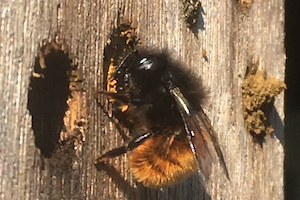Osmia spp.

Photo Credit: © peterdejong via iNaturalist.org. Creative Commons Attribution-NonCommercial 4.0 International (CC BY-NC 4.0) License; https://creativecommons.org/licenses/by-nc/4.0/.
Osmia spp.
Common Name: mason bee
Animal Guild: Insect
Class > Order > Family: Insecta > Hymenoptera > Megachilidae
ITIS information for
mason bee (ITIS TSN: 154377 )